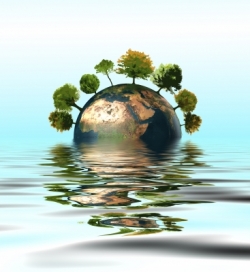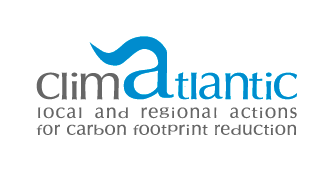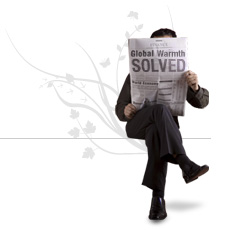NEWS & EVENTS : GENERAL INFORMATION

Climate change and the seas
07.07.2015
Climate change is warming the oceans, causing acidification of marine environments, and changing rainfall patterns. This combination of factors often exacerbates the impacts of other human pressures on the seas, leading to loss of marine biodiversity. Many human livelihoods depend on marine biodiversity and ecosystems, so action to limit ocean warming must be taken quickly.
contenidosriet //
Changes in the marine food-web
The oceans absorb heat from the atmosphere. Measurements now show that the warming of the oceans has affected areas far below the ocean surface in recent decades. The effect on marine life of warming oceans is strong, and biodiversity is at ever greater risk. Nowhere is this more clearly highlighted than in the case of warmer-water plankton in the Northeast Atlantic. Some copepod are moving northwards at a rate of 200-250 km per decade. These small copepods are near the bottom of the food chain. Fish and other animals of the Northeast Atlantic feed on these copepods and their distribution pattern in the oceans may change as a result of the copepods’ northward movement.
Animals living outside their optimal temperature range expend more energy on respiration to the detriment of their other functions. This weakens them, making them more vulnerable to disease, and allowing other species that are better suited to the new temperature regime to get a competitive advantage. In addition, the spores, eggs, or offspring of these animals will struggle to develop in suboptimal temperatures. As some species suffer in the new conditions, this can have spillover effects on the other organisms that depend on or interact with them. This chain of events ultimately influences the overall functioning of the ecosystem, which can lead to loss of biodiversity. This is exactly what is happening with copepods: because they are eaten by so many other organisms their suffering influences the entire food web.
Higher up in the food chain, animals that cannot find food are forced to move in order to survive. In Europe, where sea surface temperature is increasing more rapidly than in the global oceans, they move predominantly northwards. This phenomenon can affect fish stocks, as illustrated by the way mackerel have started to spend more time in more northern waters. This can have a knock-on effect on local fishermen and communities further afield. One of the knock-on effects was the infamous ‘mackerel war’ between the EU and the Faroe Islands. The ‘mackerel war’ arose partly because of overfishing of blue whiting and partly as a direct result of fish species, including herring and mackerel, moving further north in response to rising sea temperatures. The extra time spent by the fish stocks in Faroese waters resulted in a disagreement on fishing rights. From a Faroese perspective, they had a right to the fish in their waters, but from an EU perspective, agreements on sustainable fishing quotas were being breached, potentially leading to the risk of overfishing with the loss of EU income and jobs as a consequence. The dispute came to an end in 2014, when the EU lifted import bans on the fish caught in Faroese waters in return for an end to fishing carried out by the islanders.
Acidification
In addition to absorbing heat, the oceans are also a carbon-dioxide sink. The more CO2 enters the atmosphere, the more is absorbed into the oceans, where it reacts with water to produce carbonic acid, resulting in acidification. The oceans have absorbed more than a quarter of the carbon dioxide released into the atmosphere since 1750 through human activities.
Ocean acidification has historically been associated with each of the five major extinction events that have occurred on Earth. Today acidification is happening 100 times faster than any other period in the last 55 million years and species may not be able to adapt quickly enough.
Acidification affects marine life in different ways. For example, corals, mussels, oysters and other marine organisms that build shells of calcium carbonate have a more difficult time constructing their shells or skeletal material as sea water pH decreases. Thus, anthropogenic reductions in sea water pH could affect entire marine ecosystems.
Dead zones
A rise in ocean temperature also speeds up the metabolism of organisms and their oxygen intake, which in turn reduces oxygen concentrations in water. This can ultimately make parts of the ocean uninhabitable for sea life.
Oxygen in the sea can also be depleted as a result of nutrients entering the water. For example, rainfall brings nutrients from agricultural fertilisers to the sea. This enrichment with nutrients such as nitrates and phosphates may occur naturally, but about 80% of all nutrients in the sea come from land-based activities, including sewage, industrial waste, municipal waste, and agricultural run-off. The rest mainly comes from nitrous gases emitted when burning fossil fuels from traffic, industry, power generation, and heating. In the parts of Europe where increased rainfall and temperature are brought about by climate change, the effects of nutrient enrichment are exacerbated.
Enrichment of water with nutrients drives a process known as ‘eutrophication’, which leads to excessive plant growth. When this happens in the sea, it creates what is known as an algal bloom. Through excess respiration and the eventual death and decay of these aquatic plants, oxygen is removed from the water. This results in an oxygen deficit and ultimately leads to hypoxic areas or ‘dead zones’ where aerobic life can no longer survive.
Such dead zones can be observed in Europe’s partially enclosed seas, such as the Baltic Sea and the Black Sea. Water temperature in the Baltic Sea has increased by about 2°C over the last century, which has contributed to the increase in the extent of dead zones. Moreover, the global occurrence of dead zones has doubled in frequency every decade since the mid-1900s. And unfortunately, even if the nutrient emissions to European seas were to be halted today, the legacy of past nutrient emissions would continue to cause dead zones for decades to come before the seas were returned to their former state.
Uncertain future
Although certain models look at possible climate change scenarios, it is difficult to predict how marine species will behave as the stresses on the oceans are magnified. But we do know that we must take action to mitigate climate change now in order to limit further ocean warming and ocean acidification, and the effects that both of these have on the environment and our well-being.








